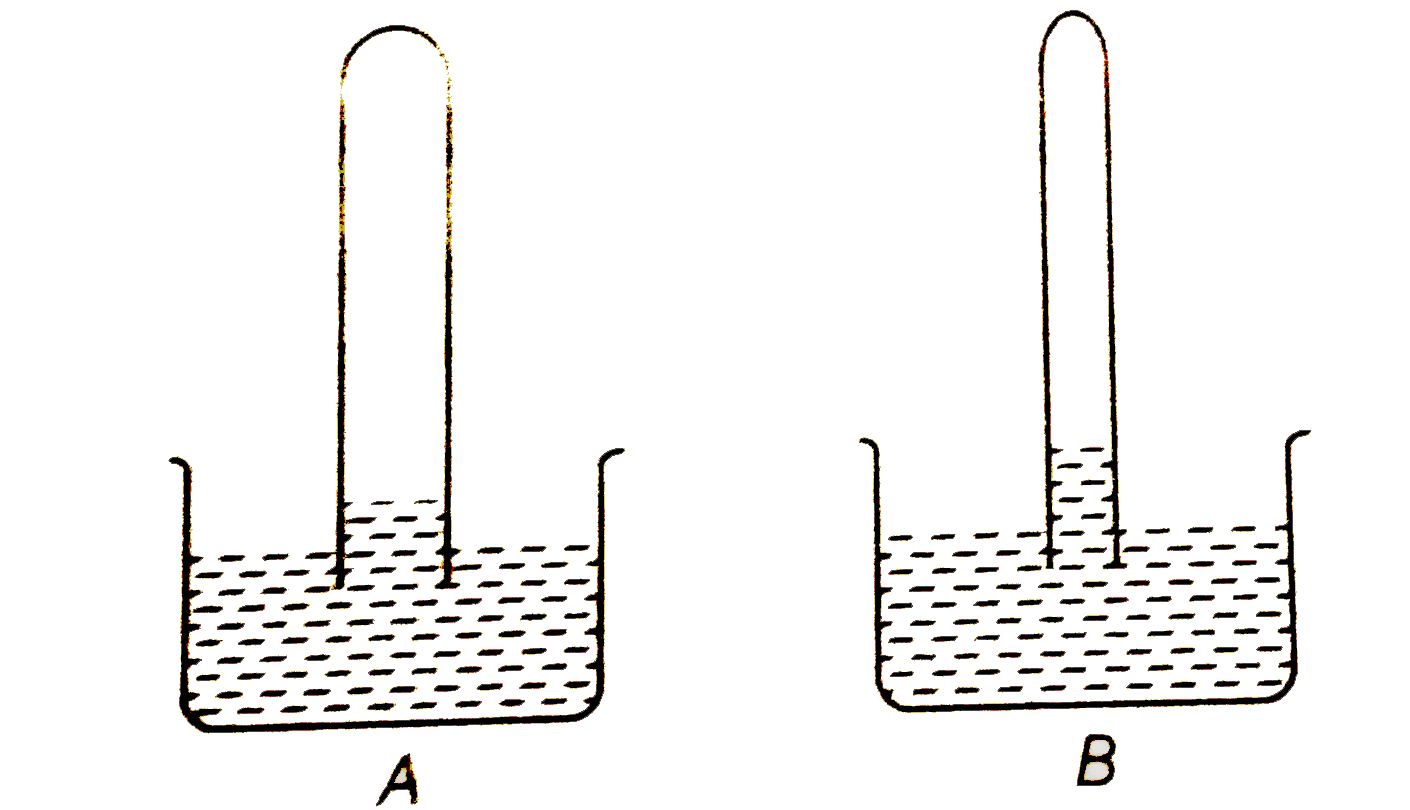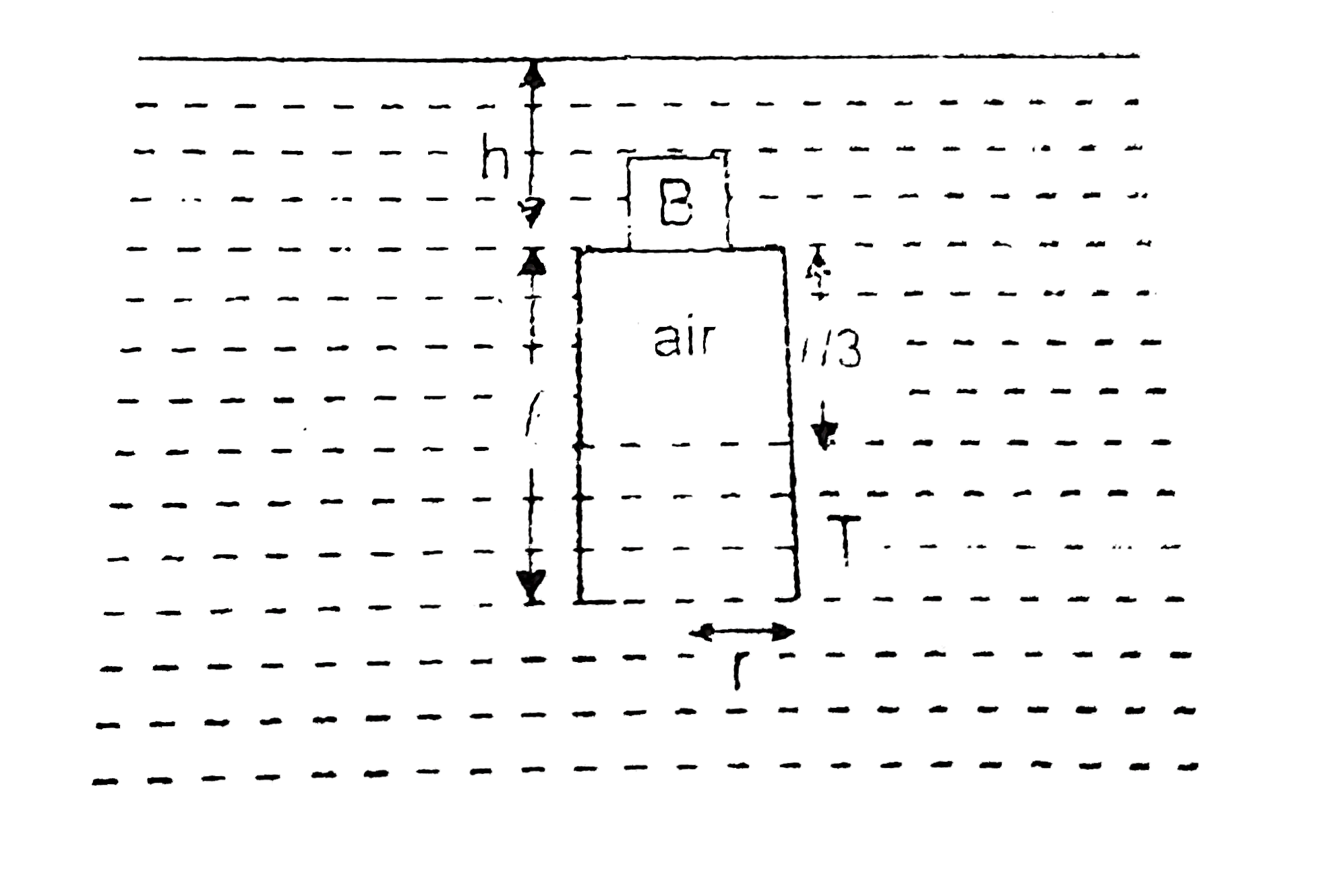If you are provided with two tubes (A and B), where one is narrow and the other is relatively wider and if both are immersed in a beaker containing water as shown in the figure.

Why does B show higher water rise than A ?
The tube B will show higher level than tube A because of the capillary action.
Topper's Solved these Questions
- TRANSPORT IN PLANTSBOOK - NCERT EXEMPLARCHAPTER - TRANSPORT IN PLANTSEXERCISE - Long Answer Type Questions
7 Videos
- TRANSPORT IN PLANTSBOOK - NCERT EXEMPLARCHAPTER - TRANSPORT IN PLANTSEXERCISE - Very Short Answer Type Questions
23 Videos
- THE LIVING WORLDBOOK - NCERT EXEMPLARCHAPTER - THE LIVING WORLDEXERCISE - Long Answer Type Questions
10 Videos
Similar Questions
You are provided with two samples of hard water, one containing temporary hardness and the other permanent hardness. Without the help of any chemical, how will you identify the nature of the sample.
View SolutionYou are provided with three test tubes A, B and C which contain distilled water, acidic solution and basic solution respectively. If you are given blue litmus paper only, how will you identify the contents of each test tube ?
View Solution
Knowledge Check
A light cylindrical tube 'T' of length l and radius 'r' containing air is inverted in water (density d). One end of the tube is open and the other is closed A block 'B' of density 2d is kept on the tube as shown in the figure. The tube stays in equilibrium in the position shown. (Assume the atmosphere pressure is to be P0)
Assume that density of air is very small than density of block and water. Pick up the correct statement (s)
 Athe volume of block B is πr2l3Bthe volume of block B is 2πr2l3Cthe pressure of air trapped in the tube is P1+dg(h+l3)Dthe pressure of air trapped in the tube is P0+dg(h+2l3)
Athe volume of block B is πr2l3Bthe volume of block B is 2πr2l3Cthe pressure of air trapped in the tube is P1+dg(h+l3)Dthe pressure of air trapped in the tube is P0+dg(h+2l3)When two capillary tubes A and B are immersed in water , the heights of water columns are found to be in the ratio 2:3 the ratio of the radii of tubes A and B is
A2:3B4:9C9:4D3:2
(a) You are provided with three test tubes A,B,C which contain distilled water , acidic and basic solutions . If you are given blue litmus paper only , how will you identify the nature of the solutions in three tubes?
(b) How will you prove that a given salt is a carbonate of a metal ?
View SolutionTwo bodies of equal weight and volume and having the same shape, except that one has an opening at the bottom and the other is sealed, are immersed to the same depth in water. Is less work required to immerse one than the other? If so, which one and why?
View SolutionA glass U-tube is such that the diameter of one limb is 3.0mm and that of the other is 6.0mm. The tube is inverted vertically with the open ends below the surface of water in a beaker. What is the difference between the height to which water rises in the two limbs? Surface tension of water is 0.07Nm−1. Assume that the angle of contact between water and glass is 0∘.
View SolutionYou have been provided with three test tubes. One of them contains distilled water and the other two contain an acidic solution and a basic solution, respectively. If you are given only red litmus paper, how will you identify the contents of each test tube?
View SolutionYou have been provided with three test tubes. One of them contains distilled water and the other two contain an acidic solution and a basic solution, respectively. If you are given only red litmus paper, how will you identify the contents of each test tube?
View SolutionYou have been provided with three test tubes. One of them contains distilled water and the other two contain an acidic solution and a basic solution, respectively. If you are given only red litmus solution, how will you identify the contents of each test tube ?
View Solution
